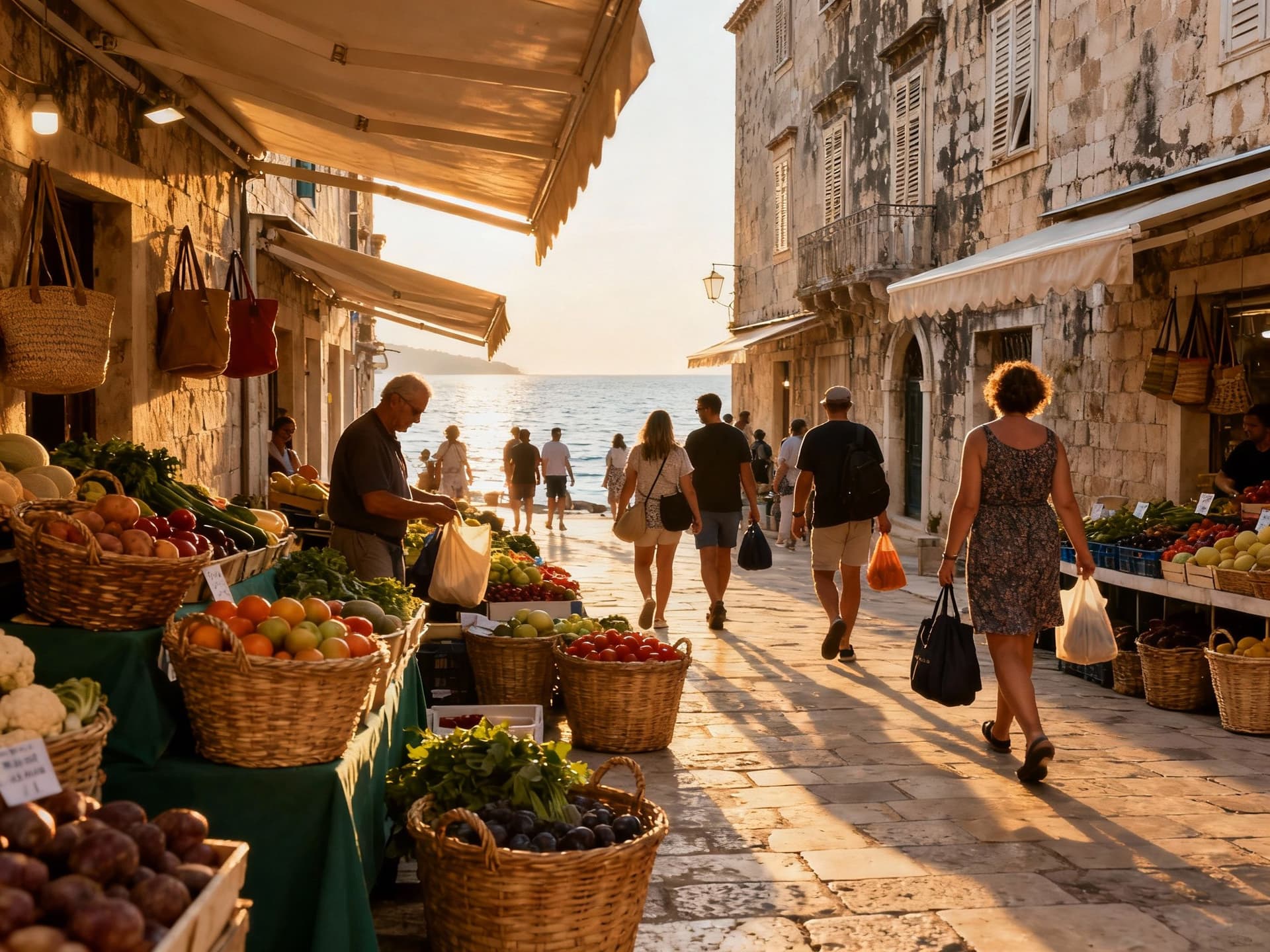Croatia: Seasonality vs Stability — Price & Yield Truths
Croatia’s market splits: coastal premiums and seasonal upside vs inland steady yields—model occupancy, regulation and full operating costs to turn lifestyle into realistic returns.
Imagine morning espresso at Dolac Market in Zagreb, an evening swim off Split’s Riva, and weekends island‑hopping from Brač to Hvar. Croatia’s rhythms—market chatter, slow coastal afternoons, compact medieval cores—shape not only lifestyle but how property behaves as an investment. For internationally minded buyers, that daily life is the first observation; the second is a data story: prices have climbed fast in urban and coastal hotspots while inland and secondary towns still offer materially different price and yield profiles. Recent market analysis shows those splits are widening and so are the practical trade‑offs for yield‑focused buyers.
Living Croatia: senses, seasons and neighbourhood character

Croatia feels compact and tactile. Old stone streets echo with conversation; cafés double as offices; promenades animate at dusk. The Adriatic shapes daily life—seafood on plates, late‑summer festivals, and an economy that tilts to tourism in coastal towns. That seasonal pulse creates strong rental demand in summer but a very different rhythm the rest of the year, which matters when you project income and occupancy for investment math.
Zagreb’s cafés and predictable cashflows
Zagreb is increasingly the work‑and‑live anchor. Neighborhoods like Gornji Grad, Ilica and Trešnjevka offer steady long‑let demand from students and professionals. Prices for new apartments rose sharply in H1 2025 and transaction volumes cooled, which both compresses immediate yield but reduces long‑term vacancy risk for furnished long‑lets. For investors prioritising stable year‑round cashflow, Zagreb’s profile looks different from a summer‑only coastal unit.
Coastline and islands: seasonal premiums, variable yields
Split, Dubrovnik and key island towns command significant premiums—often €3,500–€5,000+/m² in prime pockets. That price leads to lower gross yields if you assume full‑year income, but high summer occupancy pushes gross short‑let returns up noticeably. Recent asking‑price data show coastal counties outpacing inland growth, so buyers must quantify seasonal occupancy, platform costs, and regulatory risk before assuming headline yields translate to net returns.
Making the move: price, yield and regulatory realities

Lifestyle is the lure; regulation and taxes shape the returns. Since 2024 Croatia has signalled policy to prioritise long‑term housing and to tax property differently—measures that directly affect short‑let economics and holding costs. For yield calculations this means: model for lower short‑let availability, include potential per‑m² property levies, and stress‑test occupancy across seasons rather than rely on high summer months alone.
Property types and their expected yields
Three asset classes matter in Croatia: urban long‑lets (Zagreb, Rijeka), coastal short‑lets (Split, Hvar, Dubrovnik), and secondary inland stock (Osijek, Slavonia). Urban long‑lets typically produce lower gross yields (3–4% gross in prime Zagreb pricing) but lower vacancy and management intensity. Coastal short‑lets can show double‑digit gross seasonals but after platform fees, cleaning, taxes and potential regulation the realistic net yield narrows significantly. Inland towns can deliver higher yield percentages because prices per m² are lower, but tenant demand and liquidity are also lower—another trade‑off.
- Quick yield checklist for Croatia
- 1. Calculate both gross and net yields (include tourist taxes, platform fees, cleaning, vacancy). 2. Run a seasonal occupancy model: at least 60–70% year‑round for coastal investments to be comfortable. 3. Stress‑test for regulation: include scenarios where short‑lets are restricted or need long‑term tenancy agreements. 4. Price per m² sensitivity: see how a 10% price move impacts cap rate and payback period. 5. Exit liquidity: ask how many comparable transactions occurred in the last 12 months.
Insider knowledge: what expats and experienced investors say
Expat investors often under‑weight local nuance. They price apartments using coastal comparables when inland comparables are more appropriate; they assume Airbnb‑style summer performance will cover annual shortfalls; and they forget transaction friction—agent fees, notary, utilities and occasional renovation to meet tourist standards. Local agents who specialise in investor clients can highlight neighbourhoods that deliver consistent long‑let demand or workable seasonal peaks without taking on excessive management overhead.
Cultural and operational realities that affect returns
- • Many coastal old‑town units require upgrades for year‑round comfort (insulation, heating), which raises capex. • Local tenancy expectations favour medium‑term leases for year‑round residents; landlords used to short‑lets must adapt contracts and pricing. • Island logistics increase management and maintenance costs—factor ferry schedules and seasonal service availability into operating budgets. • Language and bureaucracy: use a bilingual lawyer and notary to avoid costly contract errors.
Conclusion: Croatia is a study in trade‑offs. Coastal towns sell a Mediterranean life and seasonal upside; inland and urban markets offer steadier baseline returns. The smart investor treats Croatian property as a segmented marketplace—match asset class to investment goal, model for regulation and seasonality, and work with local advisory that validates lifestyle claims with hard numbers. If the sea becomes part of your life, price it into the cap‑rate; if a steady yield matters more, look inland or in Zagreb. Either way, start with conservative occupancy assumptions and a full costed operating model before you fall in love with the view.
Dutch investment strategist who built a practice assisting 200+ Dutch clients find Spanish assets, with emphasis on cap rates and due diligence.


